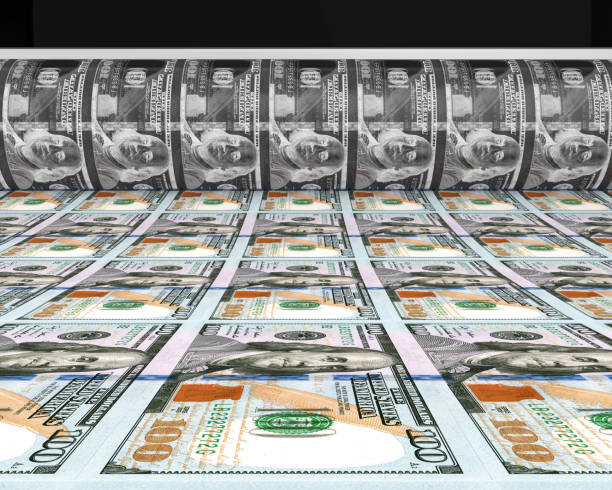Why printing money causes inflation?
Inflation, the steady ascent of prices and the concurrent erosion of the purchasing power of money, is a complex economic phenomenon that can be triggered by several contributing factors, one of which is the printing of money by governments.
 |
| Why printing money causes inflation? |
The Mechanics of Inflation: How Printing Money Catalyzes the Phenomenon
The concept of how printing money induces inflation can be distilled into a straightforward premise: when a government floods the economy with additional currency, it augments the money supply. As this expanded money supply coexists with the same pool of goods and services, the result is an inevitable surge in prices.
Consider this hypothetical scenario: a government decides to print an extra $100 billion. This influx boosts the money supply by 10%. However, if the production of goods and services remains stagnant, prices must inevitably rise by 10% to accommodate the augmented money supply.
The Quantity Theory of Money: A Theoretical Framework
The Quantity Theory of Money serves as an economic model that explicates the intricate interplay between the money supply, inflation, and economic growth. This theory posits a direct proportionality between the money supply and the price level, signifying that if the money supply doubles, the price level will also double. This relationship is expressed by the equation:
MV = PT
Where:
- M represents the money supply
- V signifies the velocity of money, indicating the speed at which currency circulates
- P denotes the price level
- T symbolizes the real output of the economy
While the Quantity Theory of Money offers a simplified portrayal of the economy, it remains a valuable tool for comprehending how the act of printing money can instigate inflation.
Assorted Precursors of Inflation
Beyond the printing of money, several other factors can kindle inflation, broadening our understanding of the phenomenon:
Increased Demand: When there's an upsurge in demand for goods and services, but the supply remains unaltered, prices naturally surge to balance the equation.
Supply Shocks: Supply shocks are sudden and severe disruptions in the availability of goods and services. These shocks can prompt a surge in prices due to scarcity.
Cost-Push Inflation: This variant of inflation materializes when production costs soar. Examples include escalating wages or surging oil prices, which can lead to higher prices for consumers.
In Conclusion
Printing money constitutes one of the fundamental catalysts for inflation. As a government introduces more currency into the economy, it amplifies the money supply, culminating in higher prices as more money competes for the same pool of goods and services.
Below is a summary table illustrating various causes of inflation:
|
|---|
Frequently Asked Questions
How much money does it take to cause inflation? The amount of money needed to trigger inflation varies depending on factors such as the size of the economy and the velocity of money. Generally, a substantial increase in the money supply can lead to inflation.
Can inflation be beneficial? In some circumstances, inflation can be advantageous, such as when it's employed to stimulate economic growth. However, high and persistent inflation can have detrimental effects.
How can inflation be controlled? Several measures can be taken to control inflation, including raising interest rates, reducing the money supply, and increasing government spending.
We hope this article has provided you with a deeper insight into the intricate relationship between printing money and inflation. Should you have any further inquiries or require additional information, please do not hesitate to reach out.